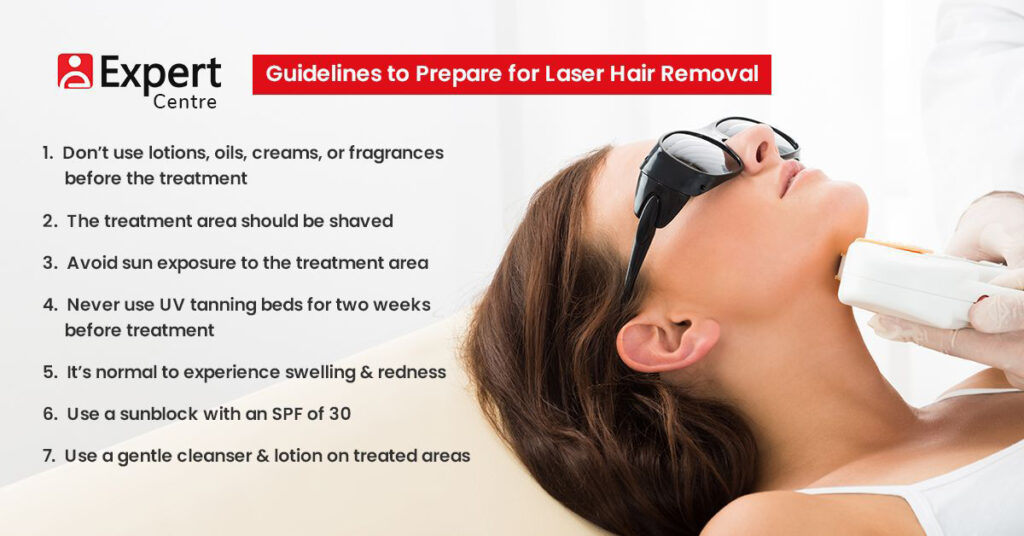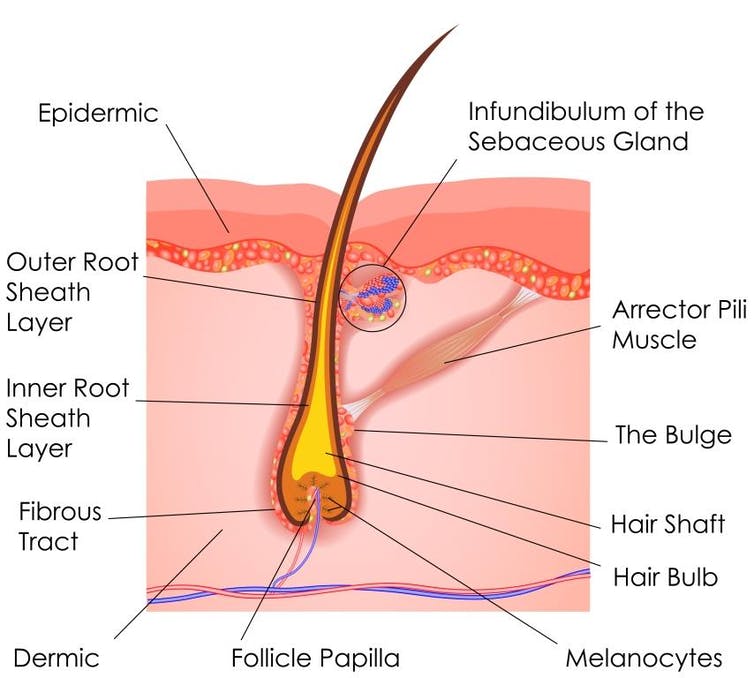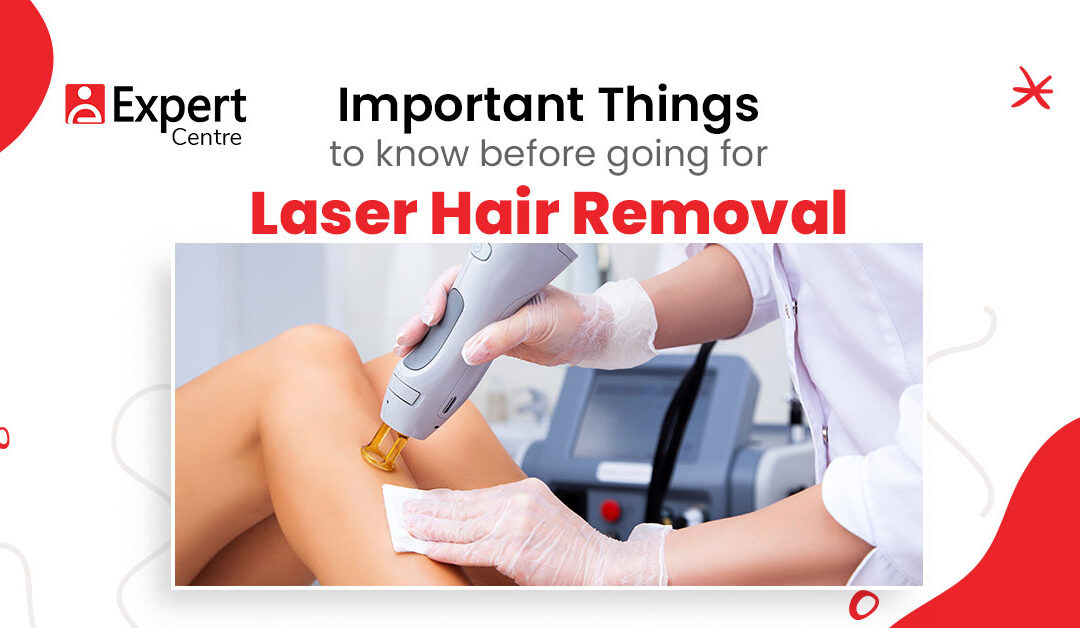Are you one of those millions of people affected by the unwanted and ugly appearing hair on different parts of the body? They must be affecting your appearance, how you feel, confidence, productivity, your dressing, and social interactions.
Are you doing enough to nip the evil in the bud?
I am not saying that you haven’t done much to combat these unsightly hairs from your body. However, have you ever tried an effective and long-lasting hair removal method apart from the old-school ones like shaving, plucking, waxing, bleaching and using epilators, etc.?
Well, if you haven’t turned your attention towards Laser Hair Removal, I’m afraid you are still living in the past and missing out on a wonderful trick that gives you smooth, soft, and hairless skin.
The laser Hair Removal process makes use of heat energy that damages hair follicles.
Read on to know more about LHR, what it can do for you, how it works, and how many treatments you will need for ideal results.

How Laser Hair Removal Works?
The usage of the latest laser-based equipment guarantees wonderful results. The emission of laser light from the handpiece turns into heat energy when targeted onto the skin.
Don’t worry, the frequency of the laser is such that it doesn’t have any adverse effect on the skin.
The energy from the laser targets the deeper layer of skin and hair pigment melanin. This way, the tissues are heated and destroyed for a long time; in turn, you don’t experience hair growth.
To minimize the damage inflicted on the surrounding tissue, the laser hair removal process needs to be conducted or administered by an experienced doctor or a certified laser technician.
Experienced professionals will make sure that specific cells are targeted carefully with the laser, i.e., hair follicle stem cells, which are found in the hair bulge.

Now, we know that there is melanin on the skin surface, which should be kept safe. To do this, the specialist may shave your hair before the laser treatment.
Is LHR a permanent solution?
The laser Hair Removal method is known to either permanently lower the hair density or gets rid of the unsightly hair for a permanent time.
Reduction of hair density means that overall you won’t face hair growth except for a few hairs, which will rise again after a session of LHR.
So, you will have to go for a complete course of sessions to achieve the desired result.
Permanently hair removal means that you have hairless skin where you went for LHR, and you won’t be seeing hair growing now.
Also, you may not need further treatments.
Determining factors
Now there are different factors that determine whether the hairs are removed permanently or just their density is reduced.
These factors are:
- The thickness and colour of the hair which is to be removed
- Patient’s skin tone
- Quality and the type of laser equipment
- Whether the person conducting the process is professional, well trained, or not
The ideal number of treatments
Whether you will need only one or two treatment sessions to get the desired results or require 6-8 or 10 sessions of LHR, it all depends on your Fitzpatrick skin type. This is how doctors classify your skin by colour, its sensitivity, and whether it will tan or not.
Those patients who have dark hair experience permanent hair removal after 4-6 treatments every 4-6 weeks.
Those people who have fair hair on their bodies will experience hair reduction. After starting the treatment, they may have to go for 6-12 treatments spaced 1 month after another.
Light brown skin, sometimes burns, slowly tans to light brown (type 3)
Those who have dark hair will get permanent removal of hair by going for 6-10 treatments every 4-6 weeks.
On the other hand, people who have fair hair will get hair reduction. These people will have to go for 3-6 treatment sessions once a month.
Moderate brown to dark brown skin rarely burns, tans well, or to moderate brown (type 4 and 5).
Dark-haired people will get permanent hair reduction by going for 6-10 sessions spaced at 4-6 weeks apart. They may also need 3-6 maintenance sessions every month.
Repeated LHR treatments must have enough time between them to allow the hew hair to grow and reach the bulge.
Side effects and complications involved in LHR
- You will have to wear special goggles before the treatment starts, as it will keep your eyes safe from the laser radiations. Also, during the treatment, you may have to bear slight pain or discomfort. Especially the first couple of treatments can’t be painless.
- This pain is caused if your laser hair removal expert doesn’t shave the hair in the treatment area before starting the process. Those hairs that couldn’t be shaved before the treatment tend to absorb the energy emitted from the laser resulting in heated skin.
- You will feel less amount of pain or even nothing in repeated treatments done at regular intervals.
- Once the treatment session is over, your skin may feel warm for the next 15-30 minutes.
- Some patients may experience redness and swelling in the treatment area. If so, this condition can stay for 24 hours, after which your skin comes back to normal.
- Some people with extremely sensitive skin may have to deal with blisters, pigmentation, and permanent scarring.
- Blisters, permanent scarring, and pigmentation occur in those people who have had recent tanning or if the laser specialist is unable to adjust the settings correctly.
- Another reason why these unwanted conditions happen is that the patient may have been on certain medications.
Although the side effects linked with laser hair removal fade away after a day or two and don’t cause any serious threat, however, it is important to contact your physician as soon as you feel any sort of pain, swelling, excessive dryness, or any other complication that is either serious or doesn’t go away after a day or two.
Type of laser: does it matter?
The type of laser has a direct impact on how result-oriented it is.
The selection of the right laser equipment also abnegates the chances of side effects, if any.
Some of the best lasers used to remove hair include:
- Long- pulse alexandrite lasers
- Long-pulse ruby lasers
- Long pulse ND: YAG lasers
- Long pulse diode lasers
One important thing to notice here, which we consider a misconception, is that Intense Pulsed Light or IPL devices aren’t exactly laser devices.
You can call them flash lamps which emit different wavebands of light at a time.
Although they work just like lasers, they are considered less effective. Moreover, they don’t produce permanent results. The type of laser to be used for the treatment and how it should be used is based on things like skin type and complexion. Add to that the factor of lowering the risk of damage to the melanin-producing cell.
People blessed with fair skin and dark hair may go for an IPL device, diode laser, or an alexandrite laser. People having dark skin and dark hair may go for an ND: YAG or diode laser. Lastly, people with having red or blonde hair should choose a diode laser.
Important
Choosing an experienced person and a well-known laser hair removal clinic is quite important. They know how to use the laser emissions effectively, control the heat and abnegate cell damage by using short pulses.
The energy of the laser must be adjusted at a level that is high enough to damage the hair follicle and moderate as well so that the patient doesn’t feel pain, discomfort, and skin burning.


Recent Comments